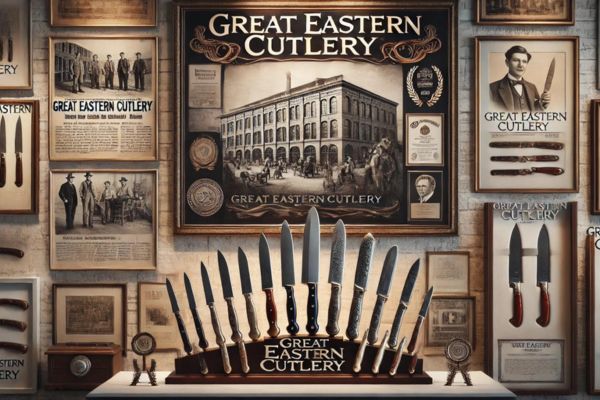Great Eastern Cutlery (GEC) has long been a significant name in the cutlery industry, known for producing high-quality, traditional pocket knives. However, in recent years, there have been notable changes and challenges that have impacted the company. This article delves into what happened to Great Eastern Cutlery, examining the factors that have shaped its current state.
1. History and Reputation of Great Eastern Cutlery

Great Eastern Cutlery, founded in 2006 in Titusville, Pennsylvania, quickly gained a reputation for its craftsmanship and dedication to traditional knife-making techniques. The company specialized in producing pocket knives that harked back to classic American designs, often using high-quality materials such as 1095 carbon steel and various types of bone and wood for handles. GEC’s commitment to traditional methods, such as hand-finished blades and meticulous attention to detail, earned it a loyal following among collectors and knife enthusiasts.
2. Increased Demand and Production Challenges

Over the years, Great Eastern Cutlery experienced a significant increase in demand for its knives. The company’s limited production runs and the high quality of its products made its knives highly sought after, often selling out quickly upon release. However, this surge in popularity also brought production challenges. GEC maintained a relatively small operation, and scaling up production while preserving the quality and craftsmanship that defined its knives proved difficult. This led to longer wait times and frustration among customers who struggled to obtain the knives they desired.
3. Supply Chain Disruptions

Like many manufacturers, Great Eastern Cutlery faced supply chain disruptions, particularly during the COVID-19 pandemic. The pandemic caused delays in obtaining raw materials and components necessary for knife production. Additionally, workforce shortages and health and safety regulations further complicated manufacturing processes. These disruptions impacted GEC’s ability to maintain consistent production schedules and meet the high demand for its products, leading to delays and limited availability of new releases.
4. Leadership Changes and Strategic Shifts

Changes in leadership and strategic direction have also played a role in the evolution of Great Eastern Cutlery. The company’s founder, Bill Howard, was instrumental in establishing GEC’s reputation for quality and tradition. As the company grew, there were inevitable changes in leadership and management practices. New leadership often brings different perspectives and strategies, which can affect the company’s direction. Some enthusiasts and collectors have expressed concerns that these changes might lead to deviations from the traditional methods and quality that initially defined GEC.
5. Future Prospects and Industry Trends

Despite the challenges, Great Eastern Cutlery remains a respected name in the cutlery industry. The company’s dedication to craftsmanship and tradition continues to resonate with knife enthusiasts. Looking forward, GEC may need to adapt to changing market conditions and consumer expectations. This could involve exploring new product lines, embracing technological advancements, or finding innovative ways to scale production without compromising quality. The broader industry trends, such as the growing interest in handmade and artisanal products, may also influence GEC’s future direction.
Conclusion
In summary, happened to Great Eastern Cutlery has faced a combination of increased demand, supply chain disruptions, leadership changes, and evolving industry trends that have shaped its current state. While these challenges have impacted the company’s operations and availability of its knives, GEC’s commitment to quality and tradition continues to earn it a dedicated following. The future of Great Eastern Cutlery will likely depend on its ability to navigate these challenges while staying true to the principles that made it a beloved name in the cutlery world.

